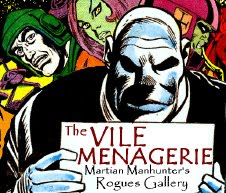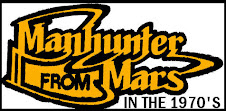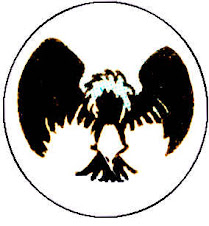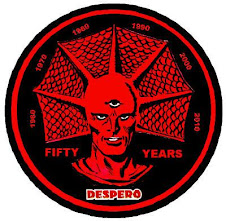
I started reading comics in the late 70s/early 80s, so by 1992, I was already a veteran. The one book that I had stuck through for most of those years was The Uncanny X-Men, which had been revived from a lengthy lull by the arrival of Jim Lee as co-plotter and artist. This was why I stuck with the books after longtime writer Chris Claremont left, but Lee himself was gone within a year. I hung on for about two years, using the Fatal Attractions crossover as my official jumping off point from all the mutant books and Marvel in general. Around the same time, the Titans Hunt storyline had gotten me back to reading a book I'd left behind with George Pérez, and that extended into a slow but steady immersion into the DC Universe as a whole.

Between my leaving the hordes of Marvel Zombies and becoming whatever you call a DC fan, I floundered for a while looking for a universe to call home. First Comics were a favorite of mine, but they somehow managed to go under as the industry was entering its boom years. From Comics' Greatest World to the Ultraverse to every single one of Jim Shooter's upstarts, everyone got the chance to fail to impress. My first and biggest investment in a new universe was the launch of Image Comics, originally a Malibu Comics imprint. At various points Jim Lee, Whilce Portacio and yes even Rob Liefeld had been my favorite artist. I respected Marc Silvestri, and I was cool with Todd McFarlane, Erik Larsen and Jim Valentino. Unfortunately, Larsen under a pseudonym had begun a big artist vs. writer debate in the pages of The Comic Buyers Guide, and Image set out to prove his argument right by scripting the books themselves or with high school buddies. While the titles set the bar for quality printing and coloring, they also devalued quality writing so severely that the majority of most publishers' output at that time became as much of a reading pleasure as junk bond certificates. As has been well documented, the books also shipped very late, which meant I might have five issues of a book I'd committed to buy as a preorder, even after the debut issues stunk up the house. This was why I finally made a home at DC-- that's where most of the writers ended up in the talent wars.

Image didn't come together fully overnight. Originally, Lee, Portacio, Silvestri, and Joe Chiodo all worked out of Homage Studios, and at some point Lee's official shingle was something like "Aegis Entertainment." Whatever they were called, the Homage books were the best looking as a line, thanks to the contributions of pros like Mark Texeira, Michael Golden, Richard Bennett and Tim Sale, as well as new talent discoveries J. Scott Campbell, Humberto Ramos, Travis Charest, Brett Booth, Scott Clark, Ryan Benjamin, and many more. Eventually, Silvestri moved on to form Top Cow Studios, and Lee's rebranded Wildstorm focused on home grown talent. There were stabs at multimedia success, like a WildC.A.T.s Saturday morning cartoon and toy line, but its initial strength was in putting out solid books on a regular schedule to a devoted fan base.

While I gave most Wildstorm properties a try at some point, WildC.A.T.s was the main draw for me. The initial mini-series was a pretty but vacant X-Men swipe that simply replaced mutants with aliens and their progeny. The main overarching story of the entire universe was that the Kherubim (the humanoid good guy aliens with varied super-powers) were at war with the Daemonites (ugly evil shapeshifting aliens) for millenia, Earth was among the worlds caught in their conflict, and our planet ended up entangled in countless conspiracies amongst the super-powers. I wasn't especially interested in that, but was eventually drawn back into the fold after James Robinson's dabbling as a scripter of the main book and Alan Moore's full run as series writer. Robinson did a great job of recognizing the influence of G.I. Joe and the T.H.U.N.D.E.R. Agents on the Cover Action Teams and actually get that across. A major problem with Image Comics was that the creators had really interesting ideas that they talked about in interviews, but utterly failed to convey (or often even address) in their printed stories. Moore continued that upward trajectory through a parallel narrative that saw the original C.A.T.s learn that the alien war was far from black & white during a stay on the Khera, while a new team dealt with a kinky, inventive take on metahuman affairs back on Earth. Though certainly not one for the ages, Moore's WildC.A.T.s was an exceptionally entertaining team book that influenced the direction of the line for years.

The Wildstorm books had always been violent and paranoid, but the line began to solicit sophisticated writers from lines like Vertigo to really ratchet up the mature readers angle. This was the golden period of the line, with Warren Ellis, Mark Millar, Kurt Busiek, Garth Ennis, Ed Brubaker, Joe Casey, Christos Gage, Peter Tomasi, John Arcudi, Adam Warren, and many more outstanding writers presenting to the entire industry new ways to produce super-hero comics. When DC first acquired Wildstorm, I cheered, because it was my two favorite lines merging into what I thought would be a stronger whole. I hoped for a Marvel Knights style line where moribund DC properties could be revised into something fresh and hip, while the WS would gain access to more good DC scripters and DC more flashy pencillers. Instead, DC editorial micromanaged and nitpicked until WS' editors moved to IDW, their writers became Marvel's new "architects," and their artists were scattered to the four winds. Wildstorm became DC's "New Universe," a vestigial line from a departed administration with limited talent or sense of direction. Like the New U, WS ended up a post-apocalyptic wasteland where characters scavenged for survival while unknowns and has-beens scavenged for a paycheck before the end finally came.

Wildstorm was a great line that left its mark on the industry, both in terms of writing and artistry. Unfortunately, all DC owns are reprint rights and the characters, most of whom remained derivative or inanimate outside the vision of their creators. It was kind of a shame that Marvel didn't buy them, since so many WS characters were Marvelized DC analogues (where DC could have benefited from Rob Liefeld's House of Thinly Veiled Swipes.) It remains to be seen whether integrating DC and the WS reinvigorates either line, or else is just another step toward DC looking more like Kamandi's bombed out future than the shining Legion of Super-Heroes books they keep trying to shove onto a disinterested market. Regardless, J'Onn J'Onzz seems to be the sole DC character on the new Stormwatch team. Aside from the possibility of Jenny Sparks/Quantum/Blitz joining the Justice League, the WS characters are still somewhat segregated, making the Martian Manhunter something of a de facto transplant into the Wildstorm sphere. Aside from Captain Atom, no other DC hero has had such an intimate connection with these characters. The relationship promises to shape the future of both properties, since Stormwatch is clearly positioned as the most prominent and promising of the WS-related titles. As a former WS fan, I see so much potential in this mingling, but as happened with the initial DC/WS acquisition, I fear it could instead be a deathmate* that sullies both parties. Ultimately though, I can't help but feel the association elevates J'Onn J'Onzz's esteem and relevance, offering him an opportunity to explore a bold new frontier paved by titans of the typewriter for a too brief moment in time. When everyone else seems to be prematurely hopping on an early '90s revival bandwagon toward those bad old days when new universes plagued my longboxes, I can't help but see that as a good thing.
*In-joke. Deathmate was a crossover between Image and Valiant that helped signal the end of the speculator boom by being a terrifically late, high end mini-series that choked retailers across the country in 1993-1994. Stacks of Deathmate Red, Adventures of Superman #500 & Turok #1 could be seen selling for a quarter a copy at often soon-to-be-closed shops within months of release.






























5 comments:
Ah, Deathmate. I experienced it through the quarter bins since I was only buying Wizard in the nineties (for some odd reason). Two great quarter bin tastes that tasted a bit odd together.
I hope that the WildStorm properties will help revive DC. I am not certain about a lot of moves, but it seems that many of these characters -- like J'Onn -- have the potential for some great stories.
I can't remember reading any of the Image Deathmates. I'm sure I read the first silver one and the Valiant one with Shadowman, since I was a fan of his at the time, but I may have just thumbed through the rest. I sold a lot of reds in my cheapie boxes, though.
It's not that bad actually. I was burning through the valiant stuff at the time but had a pretty good working knowledge of wildstorm as I went.
I recently started reading the Stormwatch stuff in preparation for the coming series. Although with no Battallion/Fuji et al. I'm not sure how much good it's doing me. Reasonably entertaining regardless.
Yeah, this looks to be at best a reflection of the Ellis issues, but with Jenny Quantum around, this could very well just be an extension of the pre-Worldstorm WSU. They did get around to resurrecting the old Stormwatch before then, as I recall, following their massacre in WildC.A.T.S/Aliens...
Post a Comment